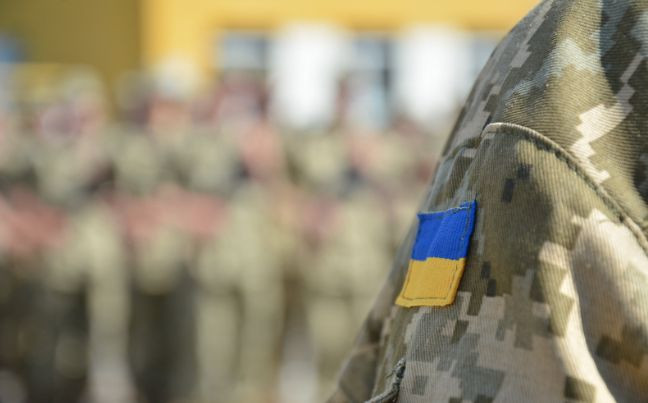Leave for the destruction of enemy equipment: no more than 15 days per year Resolution of the Ministers of Ukraine No. 585 of 21.05.2024.
To establish the mechanism and terms for the national army and other military organizations to grant addi-tional leave to the internal affairs bodies, state special bodies with law enforcement functions, foreign intelligence services, intelligence of the Ministry of Defense, and the Ministry of Defense, as specifically defined by the legislation of Ukraine, for destroying enemy equipment.
In particular, it is stipulated that leave is granted to servicemen who are directly involved in measures to ensure the security and defense of the state, as well as in measures to deter and contain the armed aggression of the state during operations in a special period.
Leave is granted to servicemen at the place of service by order of the head of a military executive body (units, institutions, establishments, SSU bodies) and the head of a military unit, indicating the reasons and duration of the leave, and the commander of a military unit (head of a unit, commission, institution or SSU body) - by order of a senior officer (chief, chief).
Commanders of military units which include servicemen from other military departments and military units may grant these servicemen permission to take leave for general reasons.
The total duration of leave may not exceed 15 calendar days per year.
Servicemen are granted leave during a calendar year with the preservation of material support, excluding the time required for travel within Ukraine and back to the place of leave, but not more than 2 days in each direction.
At the same time, more than 30 percent of the total number of servicemen in the relevant unit are absent.
This leave may be granted simultaneously with the annual basic leave (or part of it) at the request of the serviceman.
Unused vacation leave in the current calendar year is not carried over to the next calendar year.
For each unit that has destroyed enemy equipment, a soldier is granted the following period of leave
1) Warship - 5 calendar days.
2) Military aircraft - 5 calendar days.
3) Anti-aircraft missile system - 4 calendar days.
4) Self-propelled artillery or multiple launch rocket system - 3 calendar days.
5) Military helicopters - 4 calendar days.
6) Tank - 3 calendar days.
7) Amphibious assault vehicles, armored personnel carriers, command and control vehicles, infantry fighting vehicles, artillery systems - 3 calendar days.
8) Other armored or cargo vehicles - 2 calendar days.
9) Air defense radars - 4 calendar days.
10) Anti-artillery weapons - 2 calendar days.
11) Electronic warfare equipment - 2 calendar days.
12) Small unmanned aerial vehicles of short range (flight radius up to 70 kilometers, take-off weight 20-50 kilograms) - 1 calendar day.
13) Medium-range unmanned aerial vehicle (flight radius 70-300 kilometers, takeoff weight 150-500 kilograms) - 2 calendar days.
14) Long-range large unmanned aerial vehicles (flight radius 300-1500 kilometers, takeoff weight 500 kilograms or more) - 3 calendar days.
15) Cruise or ballistic missiles - 3 calendar days.
16) Remote visual surveillance complex - 4 calendar days.
17) Electronic intelligence means - 2 calendar days.
By the decision of the military unit commander (head of a unit, group, organization or SSU body), other servicemen (no more than 3 persons) who were directly involved in the detection or destruction may also be granted leave.
Attack enemy equipment under certain conditions and for a certain period of time.
Confirmation of the destruction of enemy equipment is as follows.
1) Accounting of combat operations (accounting of control of the operational situation).
2) Report (report) of the commander of the subordinate unit, group (military unit) that performed the task, indicating the situation, location (coordinates), date, time, type of destruction, type of destruction).
The destroyed devices are shown in detail.
3) Reports (reports, reports) of the commanders of the nearby (reconnaissance) forces, who confirmed the destruction of the equipment based on the results of visual observation.
4) Video recording data, technical means of intelligence (surveillance), video recordings showing the air situation of air defense combat vehicles during combat operations.
The decision to recognize enemy equipment as destroyed is issued by an administrative document (order) of the head of the military command and control body in which the unit performs its tasks (head of a unit, institution, organization or institution of the SSU).
Rules of engagement (orders).
The administrative documents (orders) confirming the destruction of equipment must specify the circumstances, place, date and time of destruction of equipment, method, type of equipment, specific persons of the unit, crew and equivalent units.
The task must be specified taking into account the personal contribution (or individuals, in case of independent performance) of those who performed the task of destroying enemy equipment.
Orders (instructions) confirming the destruction of enemy equipment in relation to civilian personnel are issued by the head of the military administrative body to which the serviceman (head of a unit, body, organization or institution) of the SSU is subordinated.
Military personnel under the command of various military administrative bodies (heads of departments, agencies, organizations or facilities of the SSU) whose equipment was destroyed in the area of respon-sibility.The grounds for issuing leave orders are administrative documents (orders) of the heads of military command and control bodies (heads of departments, agencies, institutions, facilities of the SSU) con-firming the destruction of enemy equipment.The immediate superior of a company (company-tactical group) of a serviceman who destroys enemy equipment is entitled to a leave of absence lasting one calendar day.
Thus, we can see that the adopted amendments to the current law were adopted taking into account the changes in the requirements of the time and the imposed martial law in Ukraine, as well as the fact that a legal analysis of the situation, analysis of documents and verification of documents by a lawyer and a legal opinion were carried out.

































